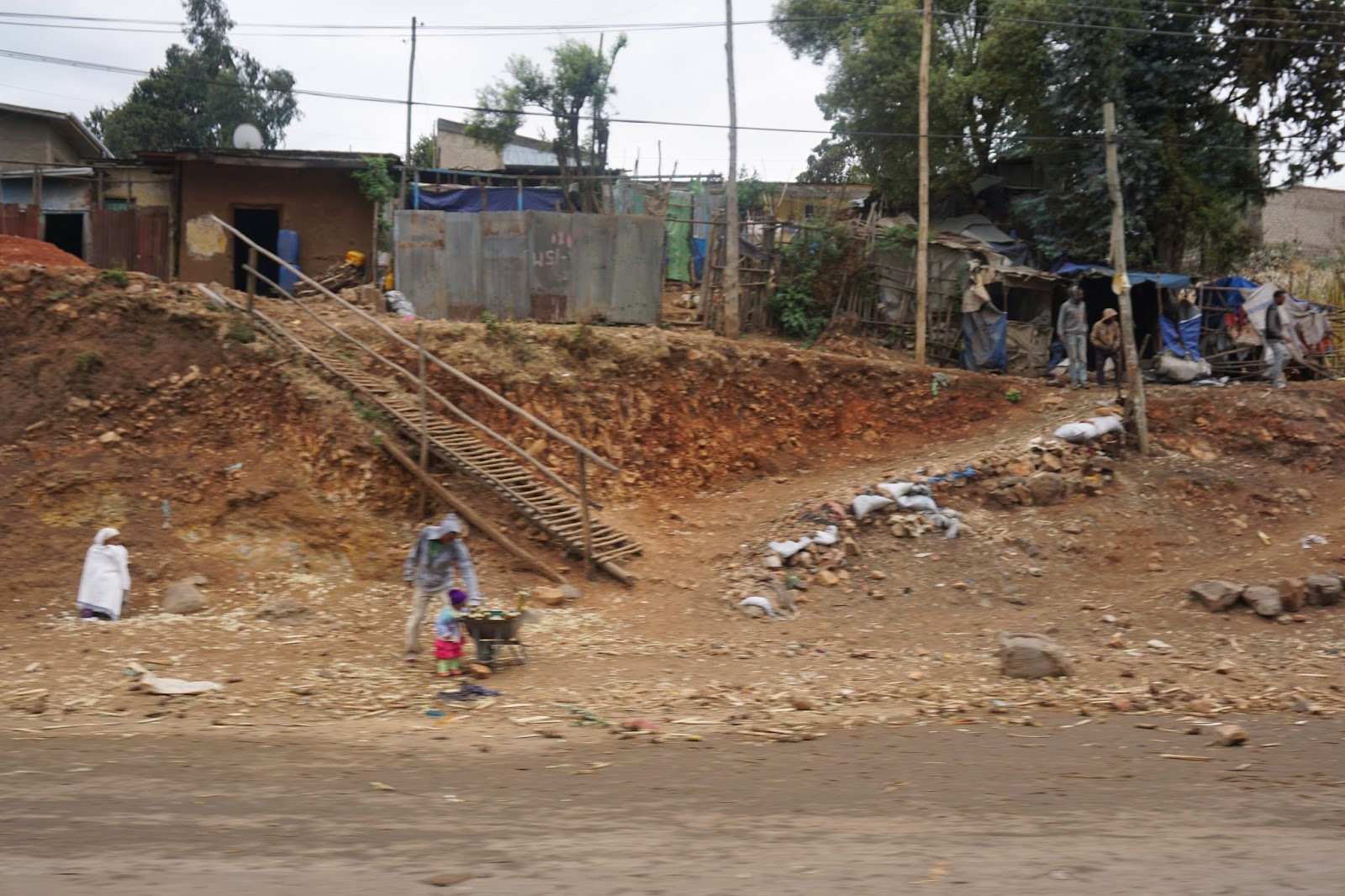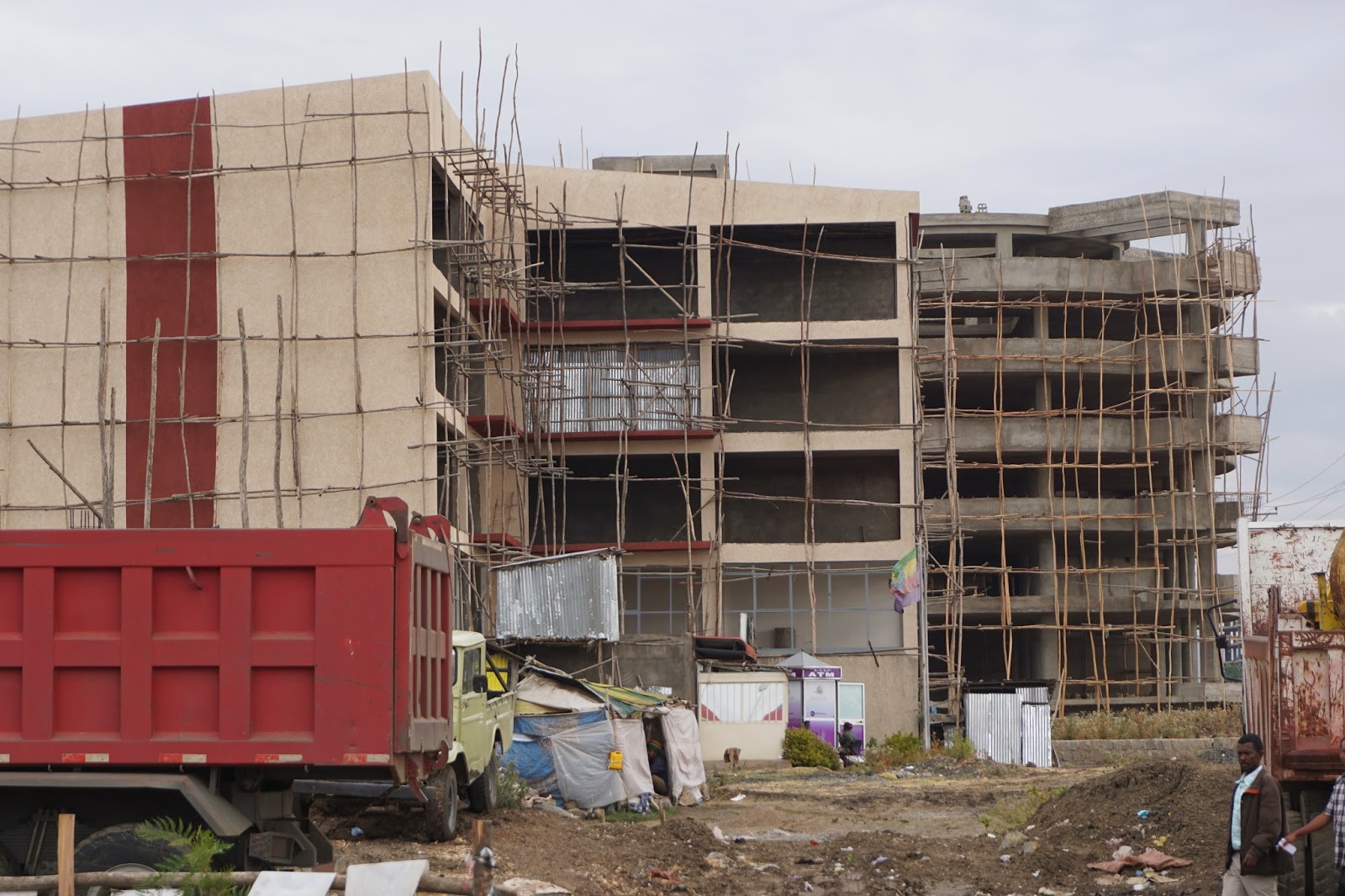Saturday March 28, 2015
Well, Walt
and I got back from our first trip out of the country and it was an eye-opening
experience. The flight is 5 1/2 hours and a longer distance than flying
from Los Angeles to New York. We arrived at night in the capital, Addis Ababa, and
so we weren’t able to see the city.
Elder and Sister Moses picked us up from the airport and said they were
anxious to drive us around the next morning to show us the city. Most of the main roads are paved but any of
the side streets are dirt and rocks – not gravel – rocks. They have a 4 wheel
drive truck and we could see why. The sides of the streets, from the pavement
to the door of the shops, are dirt and rocks and there’s trash
everywhere.
 |
| Need to get your cattle across a main thoroughfare? No Problem! |
 |
| Housing development in the suburbs |
The drivers there are definitely crazy. If they're going one direction down a divided road they may just decide to turn around and come right back at you. Several times at roundabouts, we saw drivers driving the opposite direction of travel (because their exit was shorter that way) and they were coming right at us.
 |
| These children were carrying water cans back to their home |
Of the main streets that were paved, very few had any lane markings. We would be traveling down a 2 land road and all of a sudden one of the cars would decide to make it a 3 land road and just squeeze between cars and force everyone to move over.
 |
| The government gives men jobs chipping rocks into cobblestones for a few pennies each |
 |
| We went on a four-wheel ride down in to this valley which was the scariest ride I have ever been on. |
We saw lots of donkeys
hauling things, horses pulling carts, plus goats and cows being herded
everywhere. It was like going back in to
the past. There were lots of people
everywhere, most of them walking and lots of them on the ground begging. There were make-shift shelters everywhere,
with shredded tarps for the roofs.
 |
| These boys were on the back of a donkey |
With such poverty, we couldn't figure out why everywhere we looked, we saw big buildings that were in different stages
of construction. The interesting thing is that the scaffolding on the sides of these 5 and 10 story buildings was just four inch poles cut
from the eucalyptus trees. The poles were nailed or wired together and there were
men climbing all over on them, which looked really terrifying. Some of the buildings were 13 stories
high. I only noticed one building that was using steel scaffolding. Clyde said the money is coming from China which is making a big investment in Ethiopia.
Lots of the buildings look like they will be apartment buildings which they sure can use.
 |
| Go Figure |
 |
| Empty apartments |
 |
| One of dozens of small lumber yards around town. These are the poles they use for all the building scaffolding. |
The Moses’
have a two story home with two bedrooms and so it was easy to stay with
them. They have a big wall around their yard, and even so, they made their landlord put razor wire on top of that so they would feel safer
We went to their office Wednesday
morning and learned about their finances. They have two employees that help
them, which is a unique situation. One
of them is in the office with them and he goes by ‘Chewy’. He was very nice and fun to visit with. He makes their appointments for them and does
most of their errands.
In our next post we'll talk a bit about two of the projects Clyde and Dolores Moses have done in
Addis Ababa.






















































